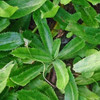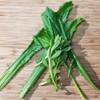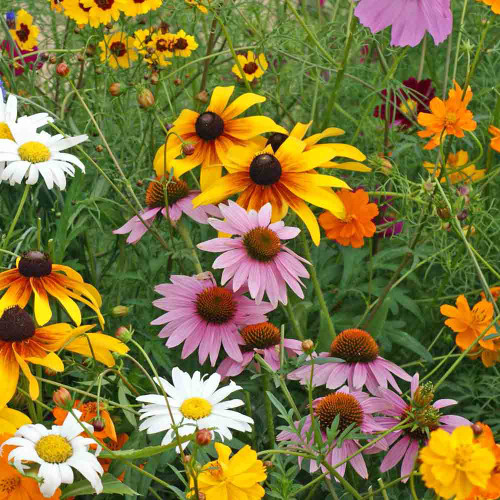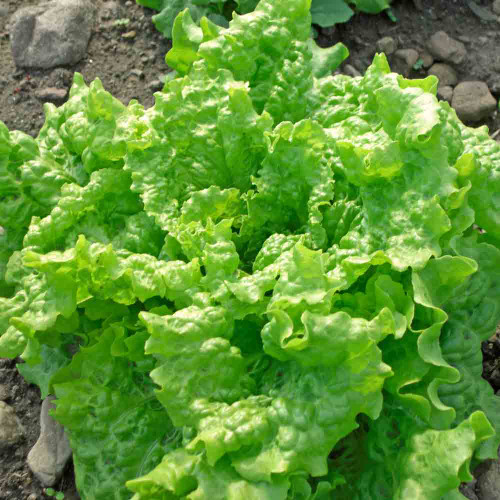Description
Culantro - Perennial Coriander
Also called long coriander or Mexican coriander in English and samat, cilantro habanero, cilantro ancho, cilantro cimarron, alcapate, or recao in Spanish, it is often mistaken for its close relative Cilantro or coriander, the dried cilantro seeds.
Detail
Culantro is a biennial herb grown as an annual that is indigenous to the American tropics and West Indies. The plant thrives best in well irrigated shaded conditions. Shaded areas produce larger and greener leaves with a better appearance and higher pungent aroma. Like its close relative cilantro, culantro tends to bolt and flower profusely under hot long days of summer months. The appearance of culantro and cilantro are different but the leaf aromas are similar, although culantro is more pungent. The leaves are 1/2 to 3/4 " wide and up to 4" long.
History
Long before its familiar relative cilantro journeyed from the Mediterranean, Culantro was deeply rooted in the landscapes and kitchens stretching from Mexico through the Caribbean to South America. For millennia, its bold, pungent flavor has been a cornerstone ingredient, essential to the vibrant character of many traditional dishes. Imagine the bustling markets and family kitchens where its distinctive aroma signaled delicious meals to come!
It remains a staple across the Caribbean, Latin America, and Southeast Asia today. Perhaps most famously, it's a non-negotiable component in foundational flavor bases like Puerto Rican sofrito, lending its unique character where cilantro might fade. While specific named cultivars are less common than with vegetables, Culantro itself, passed down through generations of culinary practice and regional adaptation, carries the spirit of an heirloom – a treasured herb connecting modern gardens to ancient roots and intense, tropical flavors.
Uses
Widely used in dishes throughout Latin America it is relatively unknown in the United States and the rest of the world. Culantro has long been used in the cuisines of the Far East, Latin America, and the Caribbean. The leaves are widely used as a seasoning in the preparation of vegetable and meat dishes, chutneys, preserves, sauces, and snacks. Unlike cilantro, it dries well, retaining good color and flavor. Rich in calcium, iron, carotene, and riboflavin, its leaves are widely used as a seasoning in the preparation of vegetable and meat dishes, chutneys, preserves, sauces, and snacks. An excellent source of vitamin A, B2, B1, and C.
Its medicinal value include use as a tea for flu, diabetes, constipation, and fevers.
Planting and Growing Tips
Culantro has a reputation for being tricky, but success comes down to patience and precisely meeting its specific germination needs. Germination is slow, typically taking 14 to 30 days, and requires consistent conditions. This reliable method, adapted from experienced Culantro growers like the Puerto Rican grandmother who shared her technique with us, helps ensure success.
Culantro requires three things to sprout successfully-
- Consistent Warmth: Soil temperature MUST remain consistently between 80-85°F (27-29°C). A heat mat is highly recommended if starting indoors.
- Light for Germination: Seeds require light to germinate. Sow them directly on the soil surface. DO NOT COVER the seeds with soil, as this prevents sprouting.
- Consistent Surface Moisture: The soil surface must never dry out during the long germination period. Fine misting is the best way to water.
Recommended Starting Method (Using a Planter/Tray)
- Because of the specific light and moisture needs, starting Culantro in a shallow pot or tray (with drainage holes) in a controlled environment is strongly recommended over direct sowing.
- Fill your planter with a high-quality, pre-moistened seed starting mix, leaving about an inch of space at the top.
- Scatter seeds evenly over the entire soil surface. Do not press them in or cover them with mix.
- Mist the surface thoroughly with a fine spray until it's evenly moist but not soaking wet (water shouldn't drip heavily from the bottom).
- Cover the planter with a humidity dome or clear plastic wrap to maintain moisture.
- Place the covered planter in a warm (80-85°F) location that receives bright, indirect light. Avoid direct sunlight, which can overheat the container and dry the surface too quickly. A heat mat is the easiest way to maintain consistent warmth.
Germination & Seedling Care
- Be Patient! Check daily for moisture, misting the surface as needed (usually 1-2 times daily) to keep it consistently damp. Remember, germination takes 2-4 weeks.
- Once sprouts appear, remove the humidity dome.
- Continue misting regularly to keep the soil surface moist while seedlings are small.
- Provide bright, indirect light. Grow lights positioned a few inches above the seedlings work very well.
- As the true leaves develop and start to shade the soil surface, you may be able to reduce misting frequency slightly, depending on your environment, but never let the soil dry out completely.
Transplanting
- When seedlings have several true leaves and seem sturdy enough to handle, you can carefully prick them out.
- Transplant into larger individual pots or directly into a garden bed (spacing 6-8 inches apart) located in partial shade with rich, consistently moist soil.
- Alternatively, if started in a sufficiently large planter, you can simply thin the seedlings to the desired spacing and let them mature in place.
Harvest
You can typically begin harvesting outer leaves about 90 days (3 months) after sowing. Snip individual leaves as needed, allowing the central crown to continue producing more foliage.
Learn More
From the soil to the seed to the food you eat - we'll help you grow your best garden!















